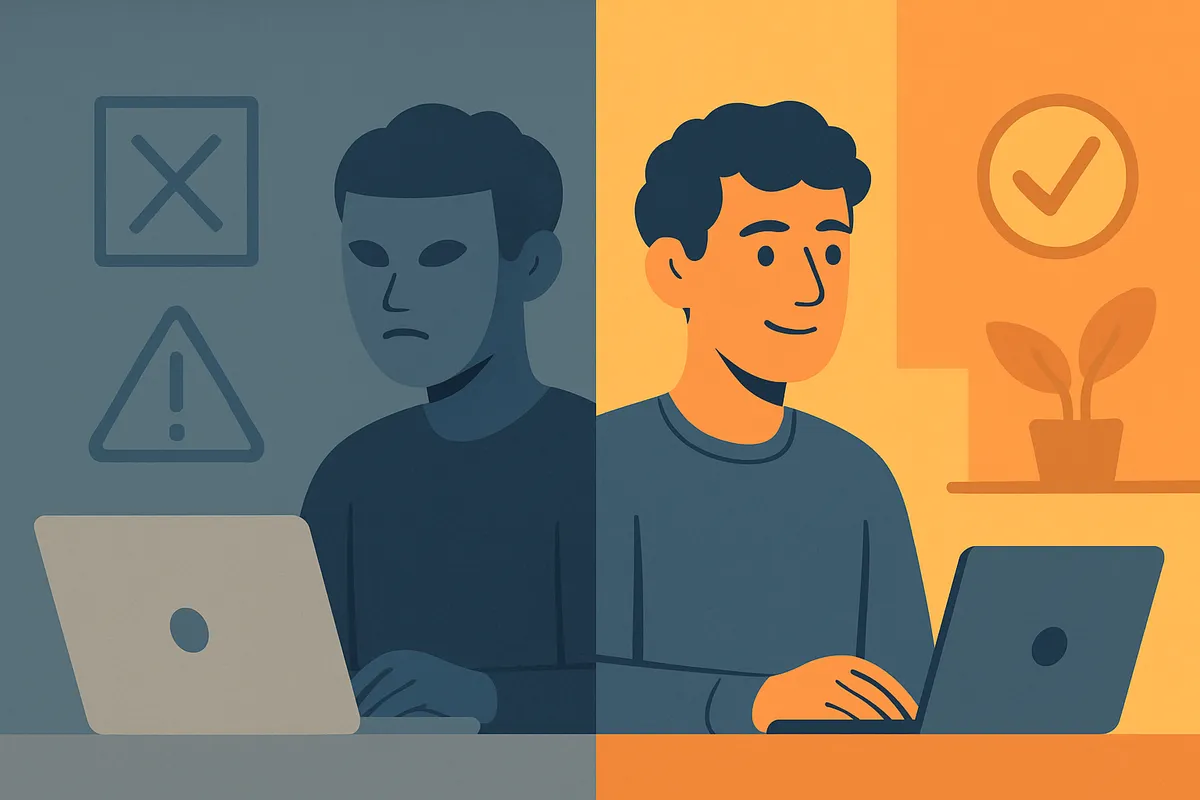Safety in the Signals: How Cues Shape Autistic Masking at Work
 Why masking still costs us
Why masking still costs us
Autistic people often camouflage — or mask — our traits to get through daily life. That can mean forcing eye contact, hiding stims or carefully scripting words. It is rarely free. Camouflaging is tied to anxiety, depression, burnout and suicidality. We know this from lived experience, but much of psychology still treats masking as a coping trick rather than a public health concern.
A new paper in Autism in Adulthood by Cottington and Shoda does something rare. Instead of testing how to make autistic people “adapt,” it tested how the environment itself changes masking. The researchers asked a simple but long overdue question: what happens if you place autistic adults in situations with autism-affirming signals compared to stigmatizing ones?
An experiment in cues
The study ran in two phases. First, autistic adults generated lists of workplace cues that felt affirming or stigmatizing. The affirming side included things like seeing support for neurodiversity-affirming organizations led by autistic people. The stigmatizing side included classics like “high functioning” vs “low functioning” labels on flyers.
In phase two, 135 autistic adults each faced 24 short workplace scenarios. Half included affirming cues, half stigmatizing. Participants rated how much they would camouflage in each. This Highly-Repeated Within-Person design allowed the team to look at patterns for each individual, not just group averages.
The results were stark. Camouflaging effort was significantly lower in affirming situations (average 4.3) compared to stigmatizing ones (average 7.6). For 87 percent of participants, the drop was clear and statistically reliable.
Not one size fits all
A strength of the study is that it did not stop at the average. Even among those who strongly identified with the autistic community, there was wide variation in how cues shifted masking. Some people showed dramatic drops, others little change. This echoes a lived reality many of us know: one autistic person may feel safe dropping the mask after seeing a single positive signal, while another may hold the mask tight until they build trust over time.
The diversity of responses undermines the lazy picture of “the average autistic.” It forces researchers to confront autistic difference within autistic difference.
Workplaces matter
Why focus on workplaces? Because employment is one of the contexts with the highest camouflage pressure. Many autistic adults say interviews and first weeks on the job demand a “chameleon” survival mode. This study shows that even there, simple affirming cues can reduce that pressure. Imagine a workplace where sensory accommodation requests are openly welcomed. That is not a cure, but it signals belonging.
The implications are profound. If workplaces want authenticity, mental health and retention, they need to design for affirmation, not force compliance.
The caveats
The sample was majority white, mostly women, and recruited via English-language social media. That limits generalizability. Experiences of Black, Asian, Latino, Indigenous, and disabled-in-other-ways autistic adults may differ sharply. We cannot assume the same cues matter or land in the same way.
Also, the study used brief scenario descriptions. Real workplaces are messier and more resistant. That said, the controlled design makes the evidence hard to dismiss.
Why it matters now
Too much autism research still asks how to change autistic people. This study asks how to change the environment. That shift flips the harm equation. Instead of burning autistic adults out with camouflage training, it highlights how stigma produces masking and how affirmation can undo it.
For autistic staff, students or neighbors to thrive, masking requirements will not work. Signaling that our existence is safe is the only way to go for long-term benefits. That can begin with something as small as a poster or as deep as dismantling ableist HR categories.